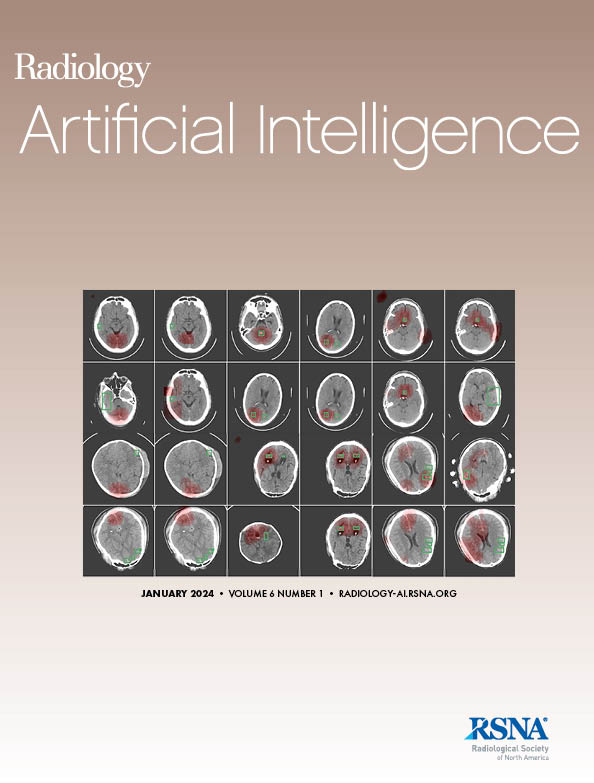求助PDF
{"title":"Distinguishing between Rigor and Transparency in FDA Marketing Authorization of AI-enabled Medical Devices.","authors":"Abdul Rahman Diab, William Lotter","doi":"10.1148/ryai.250369","DOIUrl":null,"url":null,"abstract":"<p><p>The increasing prevalence of AI-enabled medical devices presents significant opportunities for improving patient outcomes. However, recent studies based on public FDA summaries have raised concerns about the extent of validation that such devices undergo before FDA marketing authorization and subsequent clinical deployment. Here, we clarify key concepts of FDA regulation and provide insights into the current standards of performance validation, focusing on radiology AI devices. We distinguish between two fundamentally different but often conflated concepts: validation rigor-the quality and comprehensiveness of the evidence supporting a device's performance-and validation transparency-the extent to which this evidence is publicly accessible. We begin by describing the inverse relationship between the amount of performance data contained and the transparency of specific components of an FDA submission. Drawing on FDA guidelines and on our own experience developing authorized AI devices, we then outline current validation standards and present a mapping from common radiology AI device types to their typical clinical study designs. We conclude with actionable recommendations, advocating for a balanced approach tailored to specific use cases while still enforcing certain universal standards. These measures will help ensure that AI-enabled medical devices are both rigorously evaluated and transparently reported, thereby fostering greater public trust and enhancing clinical utility. ©RSNA, 2025.</p>","PeriodicalId":29787,"journal":{"name":"Radiology-Artificial Intelligence","volume":" ","pages":"e250369"},"PeriodicalIF":13.2000,"publicationDate":"2025-09-24","publicationTypes":"Journal Article","fieldsOfStudy":null,"isOpenAccess":false,"openAccessPdf":"","citationCount":"0","resultStr":null,"platform":"Semanticscholar","paperid":null,"PeriodicalName":"Radiology-Artificial Intelligence","FirstCategoryId":"1085","ListUrlMain":"https://doi.org/10.1148/ryai.250369","RegionNum":0,"RegionCategory":null,"ArticlePicture":[],"TitleCN":null,"AbstractTextCN":null,"PMCID":null,"EPubDate":"","PubModel":"","JCR":"Q1","JCRName":"COMPUTER SCIENCE, ARTIFICIAL INTELLIGENCE","Score":null,"Total":0}
引用次数: 0
引用
批量引用
Abstract
The increasing prevalence of AI-enabled medical devices presents significant opportunities for improving patient outcomes. However, recent studies based on public FDA summaries have raised concerns about the extent of validation that such devices undergo before FDA marketing authorization and subsequent clinical deployment. Here, we clarify key concepts of FDA regulation and provide insights into the current standards of performance validation, focusing on radiology AI devices. We distinguish between two fundamentally different but often conflated concepts: validation rigor-the quality and comprehensiveness of the evidence supporting a device's performance-and validation transparency-the extent to which this evidence is publicly accessible. We begin by describing the inverse relationship between the amount of performance data contained and the transparency of specific components of an FDA submission. Drawing on FDA guidelines and on our own experience developing authorized AI devices, we then outline current validation standards and present a mapping from common radiology AI device types to their typical clinical study designs. We conclude with actionable recommendations, advocating for a balanced approach tailored to specific use cases while still enforcing certain universal standards. These measures will help ensure that AI-enabled medical devices are both rigorously evaluated and transparently reported, thereby fostering greater public trust and enhancing clinical utility. ©RSNA, 2025.
区分FDA对人工智能医疗器械上市授权的严谨性和透明度。
人工智能医疗设备的日益普及为改善患者预后提供了重要机会。然而,最近基于FDA公开摘要的研究引起了对此类器械在FDA上市许可和随后的临床部署之前的验证程度的担忧。在这里,我们澄清了FDA法规的关键概念,并提供了对当前性能验证标准的见解,重点是放射学人工智能设备。我们区分了两个根本不同但经常混淆的概念:验证严谨性-支持设备性能的证据的质量和全面性-验证透明度-该证据可公开访问的程度。我们首先描述所包含的性能数据量与FDA提交的特定组件的透明度之间的反比关系。根据FDA指南和我们自己开发授权人工智能设备的经验,我们概述了当前的验证标准,并提供了从常见放射学人工智能设备类型到其典型临床研究设计的映射。最后,我们提出了可行的建议,倡导针对特定用例定制的平衡方法,同时仍然执行某些通用标准。这些措施将有助于确保人工智能医疗设备得到严格评估和透明报告,从而增强公众信任,提高临床效用。©RSNA, 2025年。
本文章由计算机程序翻译,如有差异,请以英文原文为准。

 求助内容:
求助内容: 应助结果提醒方式:
应助结果提醒方式:


